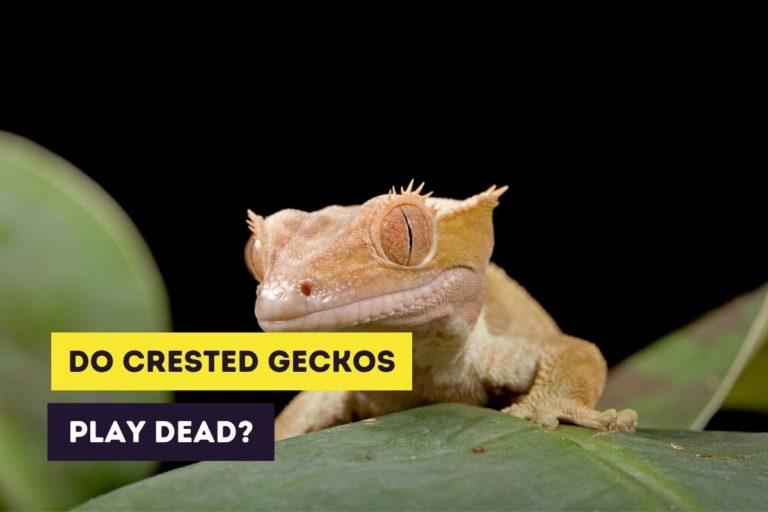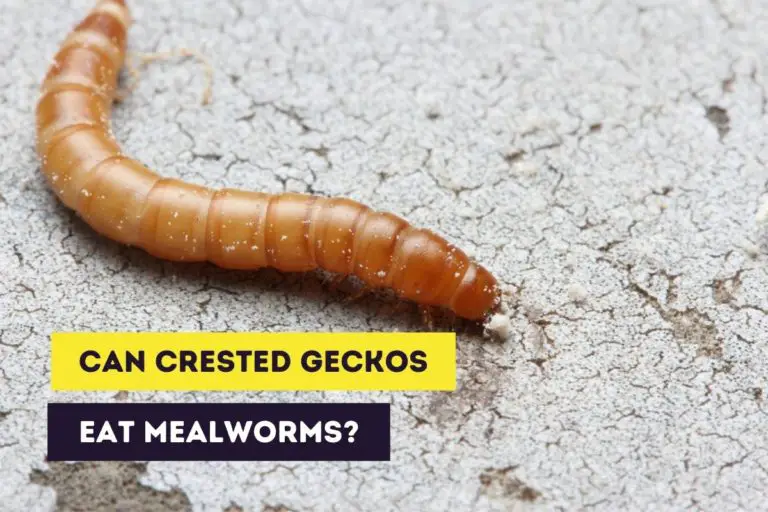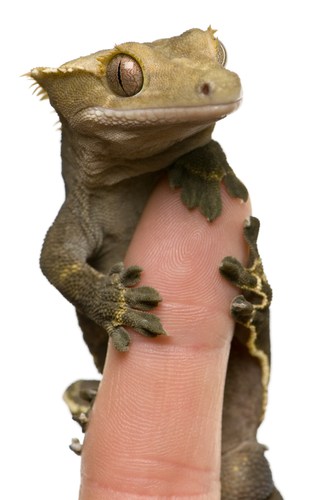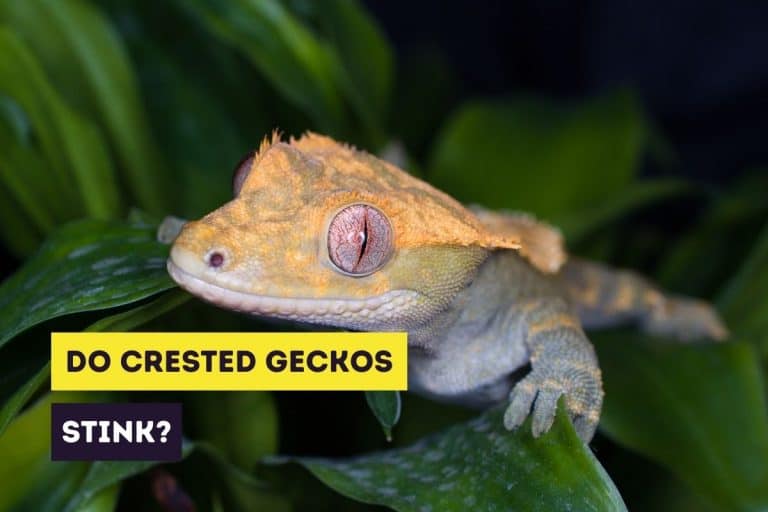Color Change in Crested Geckos: Firing Up and Down
Estimated reading time: 6 minutes
Crested geckos are beautiful lizards and are known for their patterns and colors, also called morphs. Some reptiles, like chameleons, can change their color and blend in with their environment. But do crested geckos have the ability to change color?
Crested geckos can change their color. A color change can be caused just by growing older. Hatchlings and juveniles usually have a different or other shade of color than when they’re adults. Another color-changing process is called “firing up”. This process depends on various factors.
Crested geckos are limited in their ability to change color and can’t do this of their own will. However, they will change their color when they grow up or are exposed to specific environmental triggers. Another way that causes the color of your gecko to change temporarily is the shed cycle.
If you’re interested in stickers or other products of crested geckos, you can always visit our Etsy Shop, which is called Artful Animalia. We currently only send stickers in the United States. If you’re interested in certain crested gecko-related products, don’t hesitate to contact us.
In this article, you’ll learn why a crested gecko changes its color and what environmental conditions can trigger a color change.
This site contains affiliate links to products we recommend and use ourselves. We may receive a commission for purchases that you make through these links. If you’re interested in learning more about our affiliate links, please visit our (affiliate) disclaimer.
Why Do Crested Geckos Change Color?
There are three ways your crested gecko can change its color:
- ontogenetic (age-related) color change
- environmental color change (firing up)
- mood-related color change
- color change due to shedding
Age-related color change
Crested geckos are usually born with a bright orange or red color. Unfortunately, it’s impossible to determine the adult color in the first few months. Your hatchling will not change its color overnight, but it will take a process of several months until the final and definitive color is visible.
Around the first anniversary of your crested gecko, the adult color will have set. This color can be very different than the color it had as a hatchling. Patterns are also age-related. A hatchling will have little to no marks and spots. As it grows older, it will get its definitive pattern.
Environmental color change
Even adult crested geckos can still change their color in a process that’s called “firing up”. The firing up and down of a crested gecko depends on numerous different factors. You can influence some environmental conditions that can cause firing up.
The most known reasons for a crested gecko to firing up are:
- high humidity: higher humidities around 70 percent can cause your crestie to fire up. These humidity levels usually occur at night or in the morning.
- high temperature: a temperature around 80 degrees Fahrenheit can cause your crested gecko to fire up. Just don’t expose them to high temperatures (above 85 degrees Fahrenheit) for a long time as this can cause overheating.
- lighting (or a lack of light): crested geckos will often fire up at night when there is little light. This may be a way to hide from predators by getting darker colors.
- activity: a sleeping crested gecko will usually have a duller (fired down) color. When your crestie becomes active at night, it will usually fire up and can get darker colors.
Some of these reasons are interlinked. For example, high humidity often occurs at night when there’s little light and when your crestie is active and possibly exposed to stress or fear. So it’s not always entirely possible to attribute a color change to one specific environmental trigger.
Mood-related color change
Crested geckos can also fire up (change color) depending on their mood. Stress, fear, and aggressive behavior can cause a crested gecko to fire up. The stress and fear can be caused by a new environment, shipping, handling, bad living conditions, overpopulation, or even breeding.
Color change due to shedding
Crested geckos, like other reptiles, shed their old skin and replace it with new skin. A few days before the shedding starts, you’ll notice that your crestie becomes greyer or even turn pale.
A grey or pale color is normal when your crested gecko is shedding. So there’s no reason to become concerned. Your crestie will shed its skin and it will get its normal color back after a few days.
How to Get a Crested Gecko to Fire Up
If you want to know the colors of your crested gecko when it’s fired up, you can try to create the perfect conditions for it to do so. You don’t have to scare your crestie or put it into a stressful situation!
All you have to do is create good environmental conditions. You can do so by misting the enclosure and your crestie, getting a temperature around 80 degrees Fahrenheit, and darkening the enclosure for 15 minutes.
Dangerous Color Changes
Not all color changes are normal. A crested gecko can turn pale when it’s fired down or when it’s shedding and this is without any danger. When fired up a crested gecko can become darker and even show shades of dark.
But some color changes can be a sign of a dangerous underlying issue:
- dark (black) color limited to the tail or toes
- unexpected spots on the body of your crested gecko
What to do when the tail or toes get a black coloration?
Crested geckos usually don’t become entirely black when fired up. But you might notice that the tail or the toes of your crested gecko turn black. The black color is a sign of necrosis, usually caused by incomplete shedding. When you notice this, you should immediately go to your vet to seek treatment.
What do to when you notice spots on the body of your crested gecko?
Spots on your crested gecko aren’t always a sign of health issues. For example, the dalmatian pattern is known for its spots. But when your crested gecko didn’t have spots and suddenly does get spots, it’s also possible that it has a fungal or bacterial infection. A vet should treat this infection.
Related Questions
Does every crested gecko fire up?
Not all crested geckos will fire up or do so in the same way. Some might never fire up. A lack of color change is nothing to worry about. When your crested gecko doesn’t have a lot of difference between its fired-up and fired-down coloration, you might not even notice the color change.
Why do crested geckos fire up?
Crested geckos fire up for several reasons. The process depends on their environment and their mood. Crested geckos will usually fire up when they are active and awake. Firing up is also associated with higher humidity, higher temperature, and a lack of lighting.
Why do crested geckos fire down?
Crested geckos fire down when asleep and under certain environmental conditions (low humidity, exposure to light, lower temperatures). The firing down can be a way for a crested gecko to camouflage itself during the day. For you, it will usually be a way to tell that it’s asleep.
Why is my crested gecko turning grey?
Crested geckos usually look grey or even pale when they are in a shedding process. After a few days, the color will come back and it might even be a brighter color than before. So, the grey color isn’t anything to be worried about.
Are moonglow (white) crested geckos real?
Moonglow or white-colored crested geckos are sometimes being sold at high prices because of their unique color. There’s a lot of discussions about whether or not a true moonglow exists. This is because many moonglow crested geckos are fired down and have other colors when they fire up.
Want to Learn More?
If you want to learn more about crested geckos as pets, please read the following articles.
If you’re interested in getting crested geckos as pets you should also definitely read our article about baby and juvenile crested gecko care or (adult) crested gecko care.







